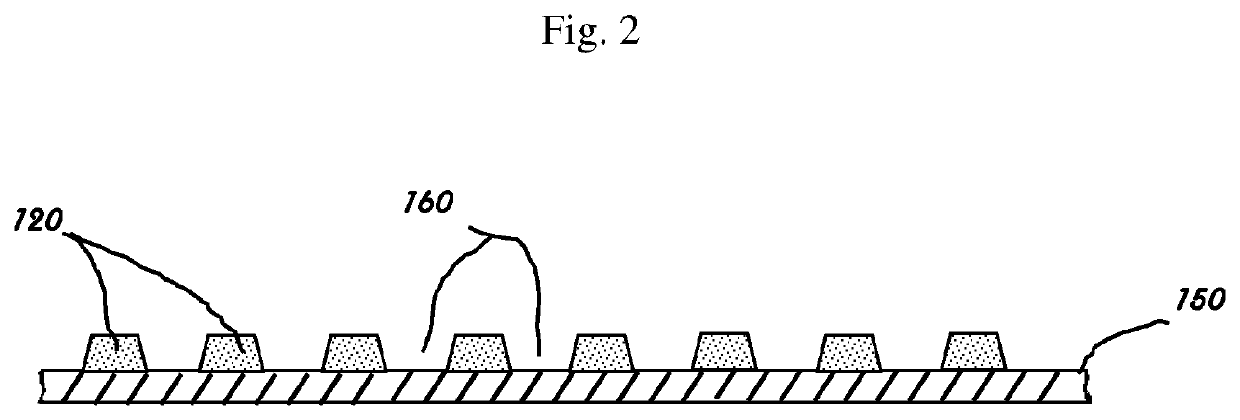Additive manufacturing with an olefin block copolymer and articles made therefrom
a technology of additive manufacturing and olefin block, which is applied in the field of additive manufacturing methods, can solve the problems of insufficient printing, limited material availability, and hdpe) or polypropylene tended to warp and other problems
- Summary
- Abstract
- Description
- Claims
- Application Information
AI Technical Summary
Benefits of technology
Problems solved by technology
Method used
Image
Examples
examples
Materials:
[0123]The materials to make the additive manufactured articles appear in Table 1. Purchased filaments were used as is; other resins were converted into 1.8 mm filament using a Nortek single screw extruder.
TABLE 1CommercialNameMaterialSourceInformation3D Universe ABS FilamentAcrylonitrile Butadiene3D UniverseStyreneDMDA 8940-NT-7High Density PolyethyleneDow44 g / 10 min MI @ 190 C., Density: 0.951 g / cc,Mp: 128 C.D115APolypropyleneBraskem11 g / 10 min MFR @ 230 C., homopolymerhomopolymerpolypropyleneDOWLEX 2045GLinear Low DensityDow2.5 g / 10 min MI @ 190 C., 0.919 g / cc densityPolyethyleneAFFINITY EG 8200GUltra Low DensityDow5.0 g / 10 min MI @ 190 C., 0.870 g / cc densityPolyethyleneCBC1Polypropylene block9.5 g / 10 min MFR @ 230 C., EP / iPP 50 / 50, 92%CopolymerC2 in EPBC1Polypropylene Block6.5 g / 10 min MFR @ 230 C., EP / iPP 50 / 50, 65%CopolymerC2 in EPCBC2Polypropylene block7.1 g / 10 min MFR @ 230 C., EP / iPP 50 / 50,Copolymer65% C2 in EPCBC3Polypropylene block23.5 g / 10 min MFR @ 230 C., EP / i...
PUM
| Property | Measurement | Unit |
|---|---|---|
| mol % | aaaaa | aaaaa |
| polydispersity | aaaaa | aaaaa |
| polydispersity | aaaaa | aaaaa |
Abstract
Description
Claims
Application Information
 Login to View More
Login to View More - R&D
- Intellectual Property
- Life Sciences
- Materials
- Tech Scout
- Unparalleled Data Quality
- Higher Quality Content
- 60% Fewer Hallucinations
Browse by: Latest US Patents, China's latest patents, Technical Efficacy Thesaurus, Application Domain, Technology Topic, Popular Technical Reports.
© 2025 PatSnap. All rights reserved.Legal|Privacy policy|Modern Slavery Act Transparency Statement|Sitemap|About US| Contact US: help@patsnap.com



